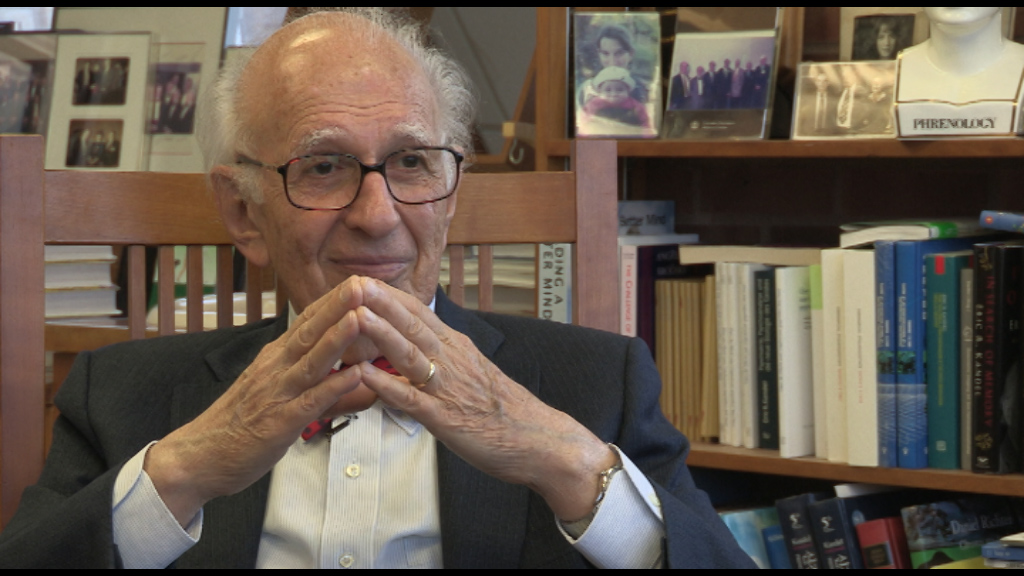NEXT STORY

I begin to work on Aplysia
RELATED STORIES

NEXT STORY

I begin to work on Aplysia
RELATED STORIES


|
Views | Duration | |
|---|---|---|---|
| 21. I decide to learn how memory works | 148 | 04:04 | |
| 22. Working with Alden Spencer | 97 | 02:38 | |
| 23. Thrilling discoveries about intracellular activity | 99 | 02:35 | |
| 24. Discovering Aplysia | 205 | 02:16 | |
| 25. I’m a Harvard snob! | 144 | 02:56 | |
| 26. Goldfish brains | 103 | 01:12 | |
| 27. I begin to work on Aplysia | 119 | 02:36 | |
| 28. Using Aplysia to study the neuroscience of behavior | 176 | 02:43 | |
| 29. Investigating the mechanisms of learning and memory | 137 | 04:43 | |
| 30. Working with Ladislav Tauc | 91 | 03:41 |


What was I going to do? Well, I had one idea that came to me from Sandy Palay, a great anatomist whom I befriended at the NIH [National Institutes of Health]. I had somehow been interested in… because I was a psychiatrist, in neuroendocrine cells, I thought they might be more important for psychiatric problems. And people knew that there were cells in the hypothalamus that released hormones, but one didn't really know whether they had properties of nerve cells, but I now knew what the properties of nerve cells were and I knew how to record from single cells. And he told me the goldfish is ideal for that. If you open up the skull, you see the hypothalamus, and you can see the area. Not only that, you can stimulate the pituitary backwards so you can identify these cells.
So I got some goldfish, little pond, and I was able during my residency to record intracellularly from these cells, completely unoriginal. I repeated what I'd done before, but listen, it's a good way to while away one's time. And I published a very nice paper on that.
Eric Kandel (b. 1929) is an American neuropsychiatrist. He was a recipient of the 2000 Nobel Prize in Physiology or Medicine for his research on the physiological basis of memory storage in neurons. He shared the prize with Arvid Carlsson and Paul Greengard. Kandel, who had studied psychoanalysis, wanted to understand how memory works. His mentor, Harry Grundfest, said, 'If you want to understand the brain you're going to have to take a reductionist approach, one cell at a time.' Kandel then studied the neural system of the sea slug Aplysia californica, which has large nerve cells amenable to experimental manipulation and is a member of the simplest group of animals known to be capable of learning. Kandel is a professor of biochemistry and biophysics at the College of Physicians and Surgeons at Columbia University. He is also Senior Investigator in the Howard Hughes Medical Institute. He was the founding director of the Center for Neurobiology and Behavior, which is now the Department of Neuroscience at Columbia University. Kandel's popularized account chronicling his life and research, 'In Search of Memory: The Emergence of a New Science of Mind', was awarded the 2006 Los Angeles Times Book Award for Science and Technology.
Title: Goldfish brains
Listeners: Christopher Sykes
Christopher Sykes is an independent documentary producer who has made a number of films about science and scientists for BBC TV, Channel Four, and PBS.
Tags: neuroendocrine cells, hypothalamus, goldfish, pituitary gland
Duration: 1 minute, 12 seconds
Date story recorded: June 2015
Date story went live: 04 May 2016